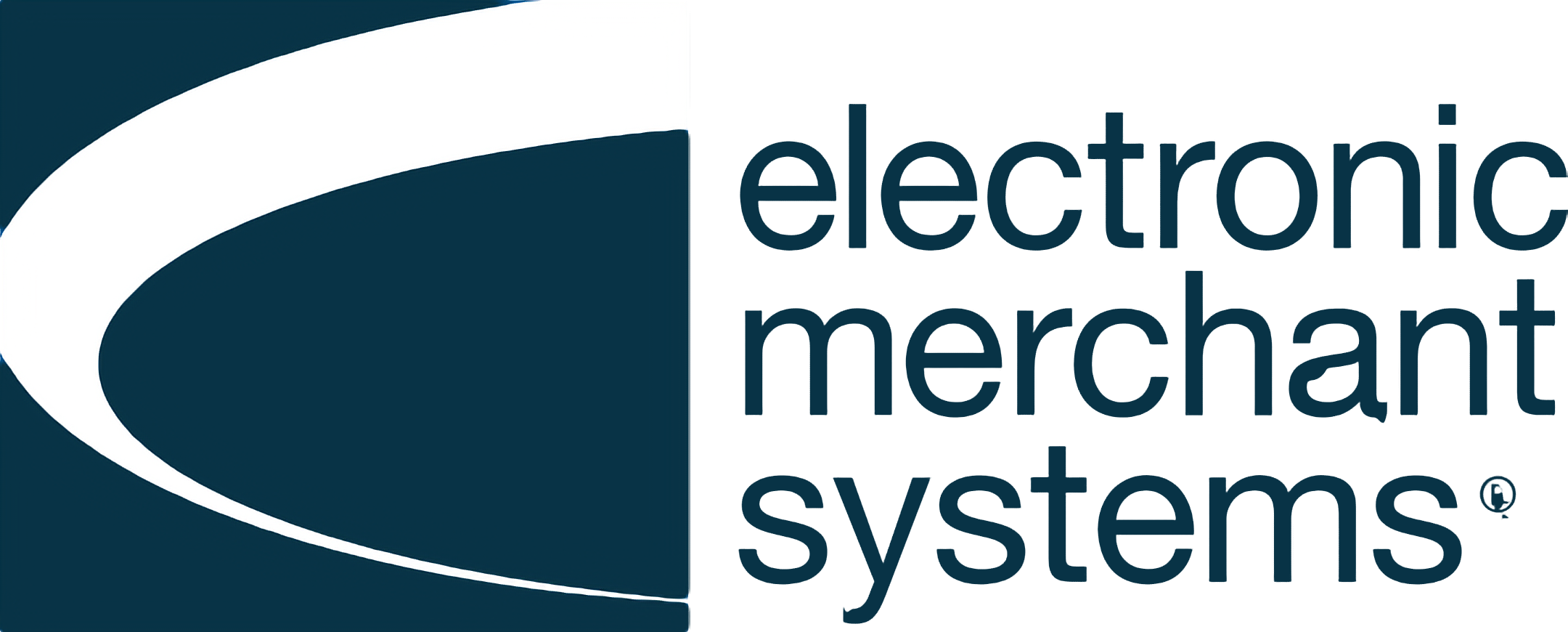Key Highlights for Buying a Small Business
- Buying an existing business lets you start your own venture without the hard work of beginning from zero.
- Make sure to carefully research and assess the business. Look at its finances, how it runs, and its place in the market.
- Get funding options ready and know the legal steps needed for acquiring a business.
- Work with the last owner to plan a smooth handover. This helps keep the business running and keeps your customers.
- Look for ways to save money right away and find chances to grow. This will help you get the most out of your investment.
- VERIFIED Credit Card Processing can help you reduce costs through dual-pricing and can integrate with over 2000 existing terminals and software solutions.
- Buying a business with no money down is possible, but it comes with unique challenges and risks.
Introduction
Buying an existing business is a great way for new entrepreneurs to start in the market. This option allows you to buy a business that is already running. You get its customer base, daily operations, and assets, which can include real estate. To do this well, you need to carefully check the health and potential of the business. You also need to get financing and make a purchase agreement to ensure a smooth transfer.
Understanding the Basics of Buying a Small Business
Acquiring a small business involves many steps that need careful planning. It is not just about buying a product or service. You are investing in a full operational system. This system includes physical items like inventory, equipment, and even the location. It also includes important features like brand reputation and customer relationships.
The journey starts by figuring out your interests in business and matching them with market opportunities. It is important to check your financial ability and secure enough funding. Next, you will evaluate possible businesses, negotiate the purchase price, and finish the acquisition with a clear purchase agreement.
Reasons to Consider Purchasing a Small Business
Launching a new business takes a lot of work, time, and money. Buying an existing business can make this easier. It helps you start your journey as an entrepreneur more smoothly.
An existing business already has a strong base. It has a working model, customers, and ways to operate. This means you enter a business that is already making money and has a place in the market.
The initial cost might be more than starting a new business, but many entrepreneurs find it’s a good idea. This lower risk and the smoother operations often lead to a quicker way to make profits, making it a choice people find appealing.
The Difference Between Buying an Existing Business and Starting New
Choosing to start a new business or take over an existing company depends on how much risk you want to take. It also depends on your resources and long-term goals. Knowing the differences between the two can help you make a better choice.
Starting something new lets you create everything your way. You can decide on your products and brand identity. But this also means you need to put in a lot of hard work upfront. You might face a time with little or no revenue while you build your customer base.
On the other hand, if you take over an existing company, you get brand recognition and customers right away. This can lead to earning money faster. But you will also take on its past issues, including any debts or problems. You may have less freedom to change its initial direction.
Preparing to Buy a Small Business
Before you start buying a business, it is important to be ready. You need to get your finances straight and know your business goals clearly. Think about what you want to achieve with this purchase.
Look closely at your money situation to see what size and type of business you can afford. At the same time, reflect on your skills, interests, and long-term goals to make sure they match the business you want. This careful planning is the key to a successful purchase.
Assessing Your Financial Readiness
Evaluating your finances is the first step in buying a business. You need to check your personal and business credit score. Look at your current assets and the financing options you may have.
Take a close look at your credit report. Find any mistakes or parts that need improvement. A strong credit history helps you get good loan terms. Then, check your financial statements. This includes your income statements, balance sheets, and cash flow statements. These will show your financial health.
Figure out how much money you can put down. Then, look at the best financing options for you. Think about bank loans, SBA loans, or seller financing. These can help you cover the difference between your available funds and the business purchase price.
Identifying Your Business Interests and Goals
It is very important to check if you are ready financially. But it’s just as important to find a type of business that you like and matches your goals. You should think about what industries excite you or where you have experience. Knowing the market and how to run a business can be very helpful.
Writing a clear business plan is a must. This plan should list your goals, who your customers are, and how you plan to grow. A good business plan helps you see your goals better and acts as a guide for your finances. It can help attract investors or get loans. This way, you make sure your finances fit your dreams, and it helps you make smart choices.
The Beginner’s Guide to Evaluating a Small Business
To evaluate a business before buying it, you need to carefully check its finances, how well it operates, and where it stands in the market. This step is very important. You should ask for and closely look at all useful information.
Start by going through key documents like financial statements, tax returns, and legal agreements. Knowing how the business is doing financially, its customer base, and the competition is vital. Doing this detailed check helps set the stage for a smart and successful purchase.
Essential Documents and Records to Review
Evaluating a business needs careful checking of its money records, legal setup, and how it operates. You must ask for and review important documents. Start with the financial statements. Look at the income statements, balance sheets, and cash flow statements.
The income statement shows what the business earned and spent over time. The balance sheet gives a quick look at its assets, debts, and equity at a specific time. Cash flow statements help you see how cash moves in and out of the business.
Also, check tax returns from the past few years. This helps verify income reports and understand tax needs. Look at legal documents too. Check licenses, permits, contracts, and lease agreements. This helps make sure everything is compliant and avoids future legal problems.
Understanding the Business’s Financial Health
The financial statements shared provide important details about how well the business is doing. You should look closely at these papers to check if the information is correct and to see the true financial situation of the business.
In addition to earnings, check the cash flow statement. This will help you understand if the business can make cash and pay its bills. Having steady positive cash flow is important for daily tasks and future growth. Look at the sales, profitability, and cash flow trends from the last few years.
This past information helps you see if the business can handle tough economic times or changes in the industry. Knowing the financial health of the business is key for deciding a fair purchase price and making a deal that fits your investment goals.
Step-by-step Guide to Purchasing a Small Business
When you decide to buy a small business, you need to take your time and plan the purchase carefully. This helps to make sure everything goes smoothly. There are several steps to follow, which go from figuring out what you want to make the deal and what comes after.
Starting with research and going all the way to how to fit in after buying, every step is very important for a successful purchase. This guide shows you the key steps to take when buying a small business. It gives you a clear plan for people who want to be entrepreneurs.
Step 1: Establish Your Investment Criteria
Before you start looking for a business, it’s important to know what you want to invest in. Think about what type of business fits your interests and skills. Also, consider how much money you can spend.
Decide the size of the business you want. Look at how much money it makes each year, how many employees it has, and how many customers it serves. You should also choose a location that works for you. Set a budget that shows how much you can afford to spend on the business.
Having this clear plan helps you find realistic options. This way, you won’t waste time and money on businesses that don’t fit your goals. It will help you focus your search better.
Step 2: Searching for a Business That Meets Your Criteria
Once you have clear criteria, the next step is to look for businesses that match your goals. Use different ways to find as many chances as possible.
Start by checking online business marketplaces and classified ads where businesses for sale are listed. You might also think about talking to a trusted business broker. They can use their network and skills to help you find the right sellers.
Networking in your field, going to trade shows, or even contacting local business owners can help you find good leads. Explore a mix of these methods to widen your search and connect with potential buyers.
Step 3: Initial Evaluation of the Business
Once you find a possible business, the next step is a quick check to see if it is a good idea. This means looking deeper than just the first presentation. You need to understand the business’s money matters and how it operates.
Start by asking for the business’s financial statements, tax returns, and any other documents. These can help you see its income, costs, and profits. Also, ask about the customer base, market share, and competition. A strong customer base and a good track record in the market are good signs.
Talk to the current owner to understand their reasons for selling, their views on the business’s potential, and any challenges they foresee. This direct insight is invaluable as you assess whether the business aligns with your goals and whether it has the growth potential you’re looking for.
Step 4: Making Contact with the Business Owner
Once you confirm that the business has great potential, the next step is to reach out to the business owner. This conversation is crucial for understanding the motivations behind the sale and gauging the owner’s flexibility in negotiations.
When you first contact the owner, approach the conversation with respect and professionalism. Express your genuine interest in the business and ask open-ended questions to encourage the owner to share detailed insights about the company’s operations, customer base, and market position. This dialogue can help you uncover any hidden opportunities or risks that weren’t evident from your initial evaluation.
Building rapport with the current owner is important as it can ease the transition period and help you gather valuable information that isn’t reflected in the financial documents. At this stage, you might also want to present a Letter of Intent (LOI), outlining your interest in purchasing the business and the general terms under which you’d like to proceed. This formal step helps to set the tone for serious negotiations.
Step 5: Arranging Financing Options
Securing financing is a crucial aspect of buying a small business. Depending on the size and nature of the business, different financing options may be available to you, including traditional bank loans, SBA loans, or seller financing.
Traditional bank loans often require a solid credit history and a substantial down payment, but they usually offer lower interest rates. SBA loans, backed by the Small Business Administration, are designed specifically for small business purchases and often come with more favorable terms, such as lower down payments and longer repayment periods.
Seller financing is another option where the seller agrees to finance part of the purchase price. This can be particularly useful if you’re unable to secure the full amount through traditional means. With seller financing, the seller typically takes a promissory note and you make payments over time, which can ease the financial burden at the outset.
When evaluating financing options, consider your comfort with risk and your long-term business goals. It’s also wise to consult with a financial advisor to understand the implications of each option and to choose the one that best fits your needs.
Step 6: Negotiating the Purchase Price
Negotiating the purchase price is a critical step in the acquisition process. This stage requires a blend of tact, knowledge, and strategic thinking. Begin by gathering data on recent sales of similar businesses in the industry. This comparative analysis, often referred to as the market approach, helps you determine a fair and reasonable offer.
When you present your offer, be sure to back it up with solid evidence, such as the business’s financial performance, industry benchmarks, and any potential risks you’ve identified. Transparency and clear communication during negotiations can help build trust with the seller, making it more likely that you’ll reach a mutually agreeable price.
Be prepared for counteroffers and enter the negotiation process with a clear understanding of your maximum budget and terms that are non-negotiable. Documenting the terms of the agreement in a term sheet or letter of intent ensures that both parties have a clear understanding of the deal before moving forward to formal contracts.
Step 7: Due Diligence Process
The due diligence process is your opportunity to verify the information provided by the seller and to uncover any potential issues that could affect the value of the business. This step is crucial to protect your investment and ensure that there are no hidden surprises after the purchase.
Engage a team of professionals, including a financial advisor, accountant, and attorney, to thoroughly review the business’s financial records, legal agreements, and operational practices. Pay close attention to any outstanding debts, pending lawsuits, or regulatory issues that could pose a risk.
You’ll also want to review the business’s relationships with key customers, suppliers, and employees to assess the stability of these connections post-acquisition. Completing a thorough due diligence process minimizes risk and provides you with the confidence to proceed with the purchase.
Step 8: Closing the Deal
Closing the deal is the final step in the acquisition process, where ownership of the business is officially transferred from the seller to you. This stage involves signing the purchase agreement, which outlines all the terms and conditions of the sale, including the purchase price, payment terms, asset allocation, and any contingencies.
It’s advisable to have your attorney review the purchase agreement to ensure that your interests are fully protected. Once both parties sign the agreement, the deal is legally binding, and ownership of the business is transferred to you.
After closing, focus on integrating the new business into your operations smoothly. This may involve meeting with key employees, suppliers, and customers to establish new relationships and ensure a seamless transition. Properly managing this transition period is critical to maintaining business continuity and setting the stage for future growth.
Financing Your Small Business Purchase
Understanding your financing options is very important when buying a business. You can look at different ways to get the money you need, depending on your finances and the details of the deal.
Some common choices include bank loans and seller financing. Each choice has different terms, interest rates, and ways to pay back. To find the best option, you should think about your comfort level with risk and how it matches with your business goals.
Overview of Financing Options Available
The world of business financing provides many ways for new entrepreneurs to secure their dream businesses. It’s important to know these options, what they need, and their long-term effects to make good financial choices.
SBA loans, which are supported by the Small Business Administration, have great interest rates and flexible terms. This makes them a popular choice for small business buyers. Seller financing is another good option. In this case, the current business owner gives money directly to the buyer. This often helps close deals when getting traditional loans is hard.
Every option comes with different interest rates, loan conditions, and eligibility rules. It is important to compare these with your financial situation and comfort with risk. This way, you can get the funds you need without hurting your future finances.
The Role of Seller Financing in Business Acquisition
In the world of buying and selling businesses, seller financing is a different way to get money that can help both buyers and sellers. In this method, the current business owner gives a loan to the buyer. This allows the buyer to pay for the business over a set time.
This method can be very useful, especially when regular loans are hard to get or when buyers want more flexible payment options. For the seller, it can provide a steady income and possibly help with tax benefits.
But, like any financial deal, it is very important to have a clear purchase agreement. This agreement should explain the loan terms, interest rates, and any conditions related to the business. When set up right, seller financing can be beneficial for everyone, helping make business sales go smoothly.
Leveraging Payment Processing to Maximize Profits
Payment processing is an important part of running a business, but it is often ignored. It can really affect your profits. When you switch to new ownership, this is a good chance to check and improve this area. Doing so can help increase efficiency and may lead to higher profits.
Start by figuring out what your payment processing needs are. Look at what types of transactions you handle, how many sales you make, and what your average transaction amount is. After that, check out different payment processing companies. Compare their fees, features, and contract terms. This will help you pick one that works well with your business model and the way you operate. Many payment processing statements are purposefully confusing, send them to us for a free analysis. When looking at Stripe or Square, they are not usually the best options for most merchants.
VERIFIED Credit Card Processing Solutions
VERIFIED Credit Card Processing can provide significant savings and operational efficiency for new business owners. One key way to reduce costs is by setting up dual-pricing, which allows you to pass the transaction fees onto the customer in a compliant way, offering them the option to pay with cash and avoid the fee. This method can drastically reduce your payment processing costs, contributing to a healthier bottom line.
Additionally, VERIFIED offers seamless integration with over 2,000 existing terminals and software solutions. This means you can likely continue using the equipment and software already in place at your newly acquired business, avoiding costly upgrades and disruptions to your operations. By optimizing your payment processing through VERIFIED, you can start your ownership with a stronger financial foundation and fewer operational headaches.
Evaluating Your Payment Processing Needs
Optimizing payment processing begins with knowing what your new business assets need. Do most of your transactions come from cards, or do you handle many ACH or other electronic payments? Understanding your transaction types helps you pick the right solutions.
Think about the sales channels you use—like physical stores, online shopping, or mobile payments. Make sure your processor works well with your current systems. It’s also important to check the security features from different payment processors.
Data breaches and fraud can seriously harm your business. That’s why it’s important to have PCI compliance and strong security measures. By carefully looking at these things, you can choose a payment processing solution that fits well with your business and improves how you operate.
How Dual Pricing Can Reduce Costs
To maximize savings and boost profitability, businesses should consider implementing dual pricing. This strategy sets different prices based on the payment method, encouraging customers to pay with cash, which incurs no processing fees.
VERIFIED Credit Card Processing can guide you in setting up compliant dual pricing while integrating it with your existing systems.
By passing credit card fees to customers who pay with cards, you can significantly reduce costs, especially if you process a high volume of card transactions. Enjoy zero processing fees if you move to dual pricing.
Dual pricing is transparent and compliant with industry regulations, allowing customers to choose their preferred payment method with clear cost implications and savings if they pay with cash.
Transitioning Ownership Smoothly
A smooth change of ownership is critical to maintaining business continuity, customer trust, and employee morale. Effective planning, clear communication, and collaboration between the old and new management are essential to ensuring that the transition goes smoothly.
One of the key strategies for a successful transition is to plan a phase where the previous owner stays involved to introduce you to key clients, vendors, and employees. This can help preserve essential relationships and ensure that institutional knowledge is transferred effectively.
Planning the Transition with the Previous Owner
A well-planned transition period is vital for ensuring operational stability and maintaining relationships with customers and employees. The former owner’s involvement can be invaluable during this time, particularly if they agree to stay on as a consultant for a specified period. This overlap allows for the transfer of crucial knowledge and helps ensure that the business continues to operate smoothly.
You and the previous owner should work together to inform employees, customers, and vendors about the change in ownership. Clear and timely communication can help manage expectations and alleviate any concerns about the transition. This collaborative approach fosters a positive atmosphere and ensures that all stakeholders feel confident in the future of the business under new ownership.
Training and Taking Over Operations
As the new owner, it’s important to immerse yourself in the daily operations of the business as quickly as possible. This involves participating in training sessions alongside key employees to gain hands-on experience with the business’s systems and processes. Learning directly from the previous owner can provide you with valuable insights and help you identify areas that may need improvement.
During this time, take the opportunity to understand each employee’s role and responsibilities. Encourage open communication to gather feedback and address any concerns they may have. This will not only help you establish yourself as the new leader but also create an environment where employees feel valued and supported during the transition.
Strategies for Immediate Cost Savings and Efficiency
The transition to new ownership presents a unique opportunity to identify cost savings and improve operational efficiency. By taking a fresh look at the business, you can uncover hidden costs and streamline processes to enhance profitability.
Reviewing and Renegotiating Vendor Contracts
One of the first areas to review is the business’s vendor contracts. With a fresh perspective, you can evaluate whether the terms, pricing, and deliverables of these contracts still align with the business’s needs. Consider whether each vendor’s services are necessary and whether their quality meets your standards.
If you identify areas where costs can be reduced, initiate negotiations with vendors to secure better terms or explore alternative providers who may offer more competitive pricing. Building strong, long-term relationships with vendors can also lead to volume discounts and other cost-saving opportunities.
Reviewing Payment Processing Fees
Payment processing fees can represent a significant cost for businesses, so it’s important to optimize this area as soon as possible. Start by reviewing the existing payment processing agreement to identify the fees associated with different types of transactions, any monthly fees, and additional charges.
Compare these rates with those offered by other payment processors and don’t hesitate to negotiate with your current provider for better terms or consider switching to a more cost-effective option, but also know that here at VERIFIED Credit Card Processing we provide free statement analysis and rate beating just need to apply or email us your 3 previous statements. Clear pricing and a thorough understanding of the fee structure can help you make informed decisions that will benefit your business’s financial health.
Implementing Technology Solutions for Efficiency
In today’s technology-driven business environment, implementing the right technology solutions can significantly improve operational efficiency. Assess the current technologies in place and consider upgrading or replacing them if necessary.
For example, a robust customer relationship management (CRM) system can automate marketing efforts, enhance customer interactions, and provide valuable data for decision-making. Similarly, cloud-based accounting software can simplify financial management, improve accuracy, and provide real-time insights into the business’s financial health.
Investing in the right technology solutions not only streamlines operations but also provides data-driven insights that support strategic decision-making. This can result in a more agile and competitive business.
Growing Your Newly Acquired Business
Once you have taken over and secured operations, the next step is to grow your new business. To do this, you need to know the market well. It is important to spot areas where you can expand and create good marketing plans.
Look at your target audience. Understand what they need and want to find ways to grow. Focus on using the strengths of the existing business. At the same time, think about new ways to expand and increase profits.
Identifying Areas for Expansion
Expansion requires a smart plan to grow your business. First, do thorough market research. This helps you find new areas to expand. Look at what competitors are doing, watch market trends, and understand what customers want to spot the chances you can use.
Adding new products or services can help you reach more customers. Check out new areas where people want what you offer. Working with businesses that provide different services can attract new customers and help you expand your reach.
Make sure to plan each step wisely. Your expansion should match your business goals and the resources you have. Doing good market research and knowing your strengths will help you grow and expand the right way.
Marketing Strategies for Small Businesses
Effective marketing strategies are essential for any successful business, especially for small ones. Using specific marketing plans is important to attract new customers and keep your current ones.
Use digital marketing channels like social media marketing, search engine optimization (SEO), and content marketing. These will help you connect with your audience better. Running paid ads on Google Ads or social media can expand your reach and bring more targeted visitors to your business.
Think about email marketing campaigns. They can help you build leads, strengthen customer relationships, and promote your products or services. Also, take advantage of online reviews and testimonials. Good customer reviews can build trust. They encourage potential customers to choose your business.
Exploring the Option of Buying a Business with No Money Down
Purchasing a business with no money down may sound too good to be true, but it is possible under the right circumstances. The key is to find a distressed business or one with an owner who is highly motivated to sell quickly.
Distressed businesses are typically struggling financially, and the owner may be eager to offload the business to avoid further losses. While this can present an opportunity to acquire a business at a low cost, it also comes with significant risks. A distressed business often has underlying issues that led to its decline, such as poor management, outdated equipment, or a declining market.
If you choose this route, be prepared to invest time, money, and effort into turning the business around. This might involve overhauling operations, investing in marketing, upgrading equipment, or even rebranding the business. Success in this scenario requires a strong operational strategy and the financial resources to support the necessary changes.
It’s also important to note that traditional financing options may be limited when buying a distressed business with no money down. In such cases, seller financing is often the most viable option, where the seller provides a loan to cover part or all of the purchase price. While this can make the acquisition more affordable upfront, it also means that you’ll need to generate sufficient cash flow from the business to meet the repayment obligations.
Before pursuing a no-money-down acquisition, carefully assess your ability to turn the business around and ensure you have the necessary resources to address the challenges that may arise.
Conclusion
In conclusion, buying a small business requires careful planning and smart choices. You need to know if you are financially ready and check how well the business is doing. Making good deals is a key part of this process. After buying, it’s important to transition smoothly and look for ways to save costs right away. This can help you grow and make your business successful. By using different financing choices and making your operations better, you can increase profits and move your small business towards growth. Keep in mind that every step is important for a successful business purchase.
Frequently Asked Questions
1. What should I look for when evaluating a small business for purchase?
When evaluating a business, conduct thorough due diligence. This includes reviewing financial statements, understanding the business model, and assessing the market position. Speak with the current owner to get insights into operations, challenges, and potential opportunities.
2. How can I determine the right purchase price for a small business?
To arrive at a fair purchase price, evaluate the business’s financial health, including cash flow, assets, and liabilities. Consider the market value of similar businesses and consult with a financial advisor if needed.
3. What are common pitfalls in buying a small business?
Common pitfalls include insufficient due diligence, overlooking financial issues, overpaying for the business, and ignoring hidden costs. It’s crucial to address these risks early to avoid unexpected challenges post-purchase.
4. How do I finance the purchase of a small business?
Explore various financing options, such as small business loans, SBA loans, or seller financing. Your credit score and the current interest rates will play a significant role in determining your eligibility and loan terms.
5. Can you explain dual pricing and its advantages?
Dual pricing allows businesses to set different prices for cash and credit card payments. This strategy can help reduce processing fees by passing the cost to customers who opt for card payments. VERIFIED Credit Card Processing can assist in setting up a compliant dual pricing model that integrates seamlessly with your current systems.
6. Can you buy a business with no money down?
Acquiring a business with no money down is possible, especially with distressed businesses or through seller financing. However, be aware that such businesses often require significant investment post-purchase to become profitable.
7. Is it better to buy a franchise or an independent small business?
The choice between a franchise and an independent business depends on your preferences. Franchises offer brand recognition and a proven model but come with restrictions. Independent businesses provide more control but may require more effort in brand building.
8. What financial documents should I review when considering a business to buy?
Review essential financial documents such as tax returns, profit and loss statements, balance sheets, cash flow statements, and accounts receivable/payable. These will provide a clear picture of the business’s financial health.
9. How does buying an existing business differ from starting a startup?
Buying an existing business offers immediate income, established customers, and proven processes, while startups offer more creative freedom but come with higher risks and longer time to profitability.
10. What are the key steps in buying a small business?
Key steps include identifying your investment criteria, finding a suitable business, conducting an initial evaluation, securing financing, negotiating the purchase price, performing due diligence, and closing the deal.
11. How can VERIFIED Credit Card Processing help lower payment processing fees?
VERIFIED Credit Card Processing can review your current payment processing statements to identify cost-saving opportunities and implement dual-pricing strategies. We also integrate with over 2,000 terminals and software systems, ensuring a seamless transition with no disruptions to your business.
12. What legal considerations should be made when buying a small business?
Engage legal experts to conduct thorough due diligence, draft a complete purchase agreement, secure necessary business licenses, and review existing contracts to mitigate potential legal risks.
Ready to optimize your payment processing and increase your business’s profitability? Contact VERIFIED Credit Card Processing today to explore how dual pricing and our expert payment solutions can lower your fees and integrate seamlessly with your existing systems. Let us help you take control of your payment processing and ensure your business thrives. Don’t wait—get started with VERIFIED Credit Card Processing now!
Continue Reading
Let us discover your best options.
Either submit the form below or get in touch with an agent now (415) 835-4135.
Applying is risk-free; we send your details to underwriters to find the best fit and contact you with the best option or request more details, with no credit checks or commitments.















